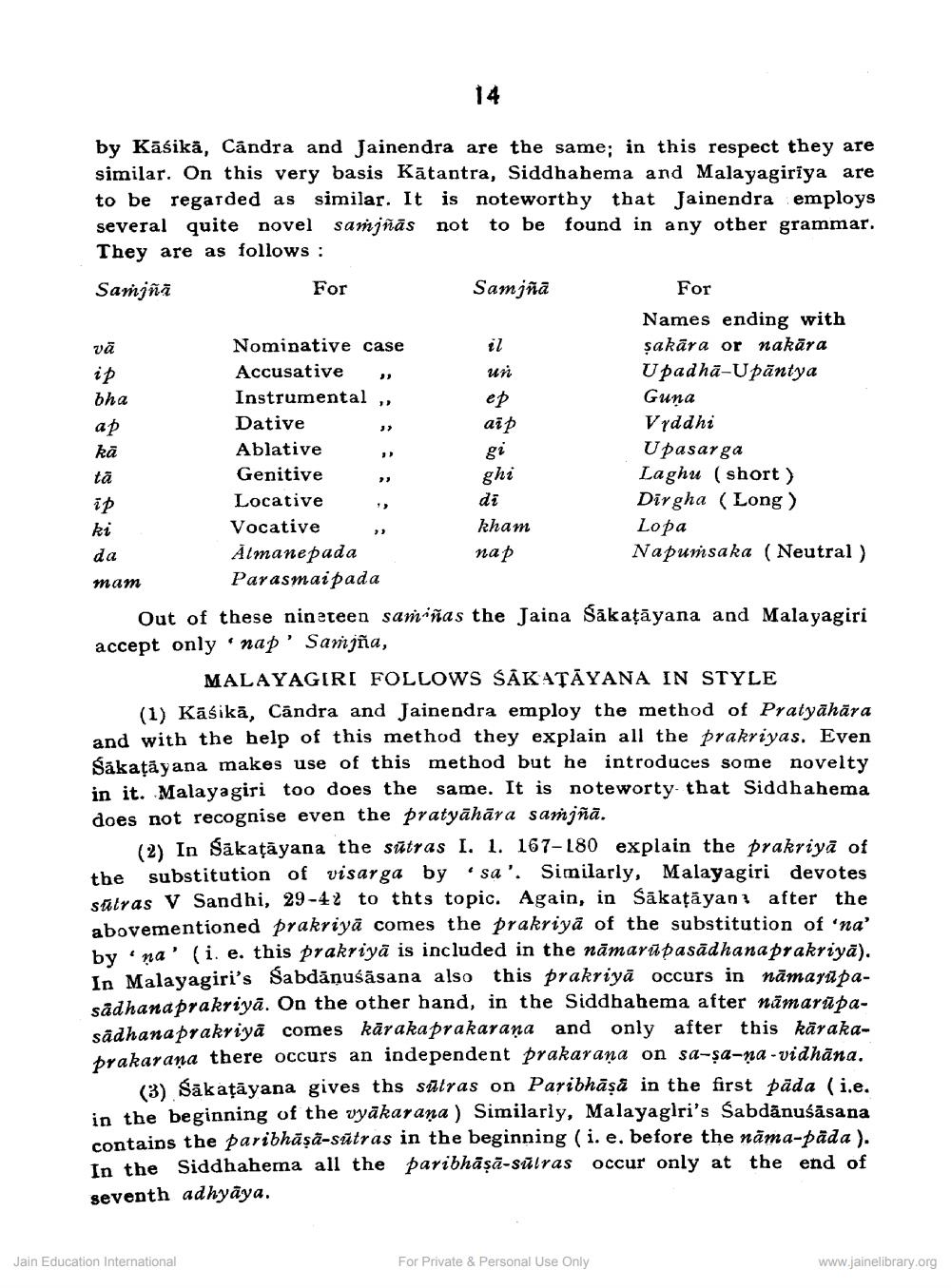________________
14
ep
ap
kā
ghi
ki
by Kāśika, Cândra and Jainendra are the same; in this respect they are similar. On this very basis Kātantra, Siddhahema and Malayagiriya are to be regarded as similar. It is noteworthy that Jainendra employs several quite novel samjñās not to be found in any other grammar. They are as follows: Samiña
For Samjña
For
Names ending with và Nominative case
sakāra or nakāra Accusative ,
น
Upadhā-Upāntya bha Instrumental ,
Guna Dative
aiр
Vyddhi Ablative
U pasarga tā Genitive
Laghu (short) ip Locative
di
Dirgha (Long) Vocative
kham
Lopa da Almane pada
nap
Napumsaka (Neutral) mam
Parasmaipada Out of these nineteen sam-ñas the Jaina sākațāyana and Malayagiri accept only nap' Samjña,
MALAYAGIRI FOLLOWS ŠÁKATĀYANA IN STYLE (1) Kāśikā, Cândra and Jainendra employ the method of Pratyāhāra and with the help of this method they explain all the prakriyas. Even Sakatāyana makes use of this method but he introduces some novelty in it. Malayagiri too does the same. It is noteworty that Siddhahema does not recognise even the pratyāhāra sanjñā.
(2) In Sākațāyana the sūtras I. 1. 167-180 explain the prakriyā of the substitution of visarga by 'sa'. Similarly, Malayagiri devotes satras y Sandhi, 29-42 to thts topic. Again, in Sākațayan: after the abovementioned prakriya comes the prakriyā of the substitution of 'na' by na' (i. e. this prakriya is included in the nāmarupasādhana prakriyā). In Malayagiri's Sabdanuśāsana also this prakriyā occurs in nāmayüpasadhana prakriyā. On the other hand, in the Siddhahema after nämarupasadhana prakriya comes kāraka prakarana and only after this kärakaprakarana there occurs an independent prakarana on sa-șa-na-vidhāna.
(3) Sākațāyana gives ths sūtras on Paribhāṣa in the first pāda (i.e. in the beginning of the vyäkar ana ) Similarly, Malayaglri's Sabdānuśāsana contains the paribhāşa-sūtras in the beginning (i. e. before the nama-päda ). In the Siddhahema all the paribhāṣā-sūlras occur only at the end of seventh adhyāya.
Jain Education International
For Private & Personal Use Only
www.jainelibrary.org




